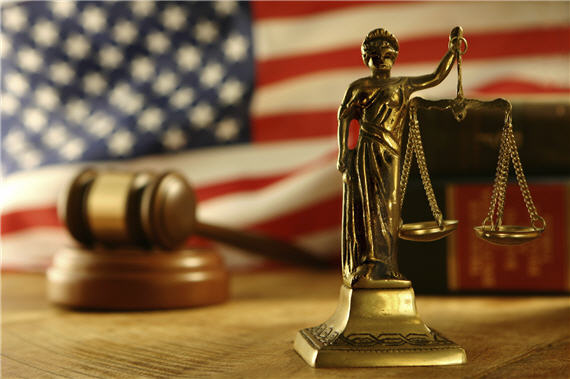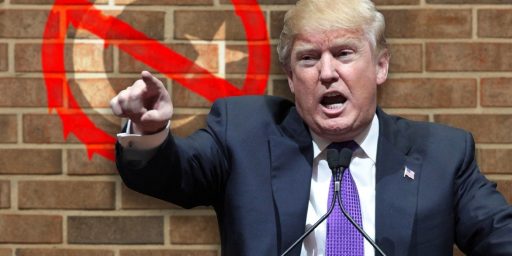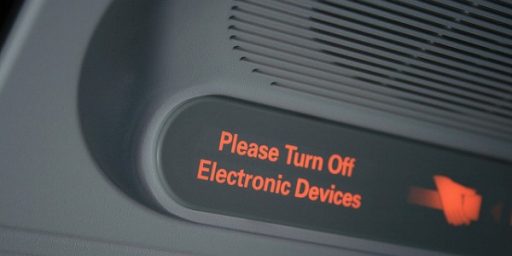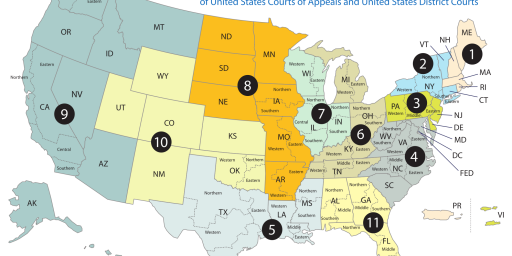Ninth Circuit Upholds Stay On Trump’s Muslim Travel Ban
The Trump Administration's Muslim Travel Ban suffers another defeat at the Ninth Circuit Court of Appeals.
The Ninth Circuit Court of Appeals has upheld the stay on President Trump’s Muslim Travel Ban imposed by a Federal District Court in Hawaii:
WASHINGTON — A second federal appeals court has ruled against President Trump’s revised travel ban. The decision on Monday, from the United States Court of Appeals for the Ninth Circuit, in San Francisco, was the latest in a string of court rulings rejecting the administration’s efforts to limit travel from several predominantly Muslim countries.
The administration has already sought a Supreme Court review of a similar decision issued last month by the United States Court of Appeals for the Fourth Circuit, in Richmond, Va.
The two courts employed different reasoning to arrive at the same basic conclusion. The Fourth Circuit said the revised executive order violated the First Amendment’s prohibition of government establishment of religion.
The Ninth Circuit, by contrast, rested its conclusions on statutory grounds. It said Mr. Trump had exceeded the authority Congress had granted him in making national security judgments in the realm of immigration without adequate justification.
The decision, from a three-judge panel, was unanimous. It was issued jointly by Judges Michael Daly Hawkins, Ronald M. Gould and Richard A. Paez. All three were appointed by President Bill Clinton.
The ruling affirmed most of a March decision from Judge Derrick K. Watson, of the Federal District Court in Hawaii. But the appeals court narrowed the injunction issued by Judge Watson in a significant way.
The appeals court said Judge Watson had erred in barring the administration from conducting internal reviews of its vetting procedures while the case moved forward. That may turn out to be important as the Supreme Court considers how to address the cases.
The key part of the executive order suspended travel from six predominantly Muslim countries for 90 days to give the administration time to conduct a review. If that review can be completed, the justices may decide that the case is or will soon be moot.
Like the Fourth Circuit, Judge Watson blocked major parts of the revised order on the ground that they violated the Constitution’s ban on a government establishment of religion. Judge Watson wrote that the statements of Mr. Trump and his advisers made clear that his executive order amounted to an attempt to disfavor Muslims.
“A reasonable, objective observer — enlightened by the specific historical context, contemporaneous public statements and specific sequence of events leading to its issuance — would conclude that the executive order was issued with a purpose to disfavor a particular religion,” Judge Watson wrote.
Ilya Somin discusses the Court’s reasoning at The Volokh Conspiracy:
The ruling upholds most of the district court injunction against the order, but lifts the part which seems to block the administration from conducting an internal review of vetting procedures for visa applicants and refugees.
Parts of the court’s statutory analysis on nationality discrimination follow reasoning first laid out by David Bier of the Cato Institute, in assessing Trump’s initial travel ban.
Unlike the Fourth Circuit decision, this statutory ruling does not turn on President Trump’s discriminatory motivations, and cannot be attacked on the basis that it would allow a similar executive order to be instituted by a different president. In my view, this critique of the religious discrimination rulings makes little sense, because any pretextual discrimination case necessarily leaves open the possibility that the challenged policy might be acceptable if undertaken for nondiscriminatory reasons. Regardless, the statutory ruling is not open to this line of attack.
It likewise avoids the debate over whether Trump’s campaign statements and Tweets are legitimate sources of evidence (in my view they are, for reasons outlined here and here). The statements and Tweets are significant only as evidence of motive, and are not relevant to an argument for which motives are largely irrelevant.
Like the earlier rulings against the revised travel ban, this one undercuts many commentators’ initial predictions that the new order would not be vulnerable to legal challenge in the way that the original was. Numerous federal judges have now ruled that the new order is unconstitutional, lacks statutory authorization, or both.
The most notable difference between this Ninth Circuit ruling and the others that have been issued by previous Courts is that the decision does not rely on the intentions behind the ban, and therefore does not look into the issue of whether comments made by the President before he took office, or by surrogates of the President afterward, can or should be considered in evaluating the Executive Order. This arguably makes the Court’s opinion stronger since it avoids what many legal observers believed to be a potential weakness in the previous opinions. Instead, as noted, the Court finds that the Executive Order exceeds the authority that Congress granted to the Executive Branch under the immigration law. Potentially, this argument could be stronger on appeal than one based on the First Amendment and the President’s pre-Inauguration comments about a Muslim Travel Ban. Of course, the Court did also speak to the First Amendment aspects of the case and largely upheld the Hawaii District Court’s opinion and its reliance on President Trump’s tweets and other comments outside of the four corners of the Executive Order itself. However, in also basing its decision on the statutory argument the Court has arguably made its opinion stronger on appeal than previous opinions.
As Somin notes, this ruling comes on the same day that the Supreme Court has set the deadline for the attorneys representing the Plaintiffs in the Fourth Circuit case to file their response to the briefs filed by the Federal Government in its effort to get the stay imposed by a Maryland Judge and upheld by the Fourth Circuit overturned. The Court’s decision on that stay request could come at any time after today, but realistically speaking it will likely take several days for Court to distribute the briefs and for the Justices to review the pleadings and to discuss the matter to determine whether or not the injunction should be lifted. It’s possible that the Court could also decide at that time whether or not to accept the Fourth Circuit case for review, although it’s likely that the hearing would not be until the beginning of the next Supreme Court term in October. One problem with that, of course, is that by its terms the Executive Order only imposes a travel ban for 120 days, which means that it would be nearly ready to expire by the time the Court is ready to hear the appeal if the stay is lifted. Given that, it’s possible that the Court could decide to keep the stay in place while the case is briefed and argued in order to maintain the status quo and avoid the fact that the case would essentially be moot by the time the Court heard it. It’s also possible that the Court could decide not to hear the case at all given the fact that both the Fourth and Ninth Circuits have reached largely the same conclusion about the Executive Order, albeit for different reasons. Without a circuit split, the Court could decide that its intervention is unnecessary at this time.
Somin goes on the discuss the possible outcome of this case, and the Fourth Circuit case, at the Supreme Court:
The president might do better in the Supreme Court if that pattern holds, as that court has a 5-4 Republican majority. But it is possible that swing voter Anthony Kennedy and perhaps some other GOP justices will break partisan ranks. Trump’s recent tweets about the case may increase the likelihood of such an outcome. I also cannot entirely rule out the possibility that a Democratic justice such as Stephen Breyer might vote to uphold, based on judicial deference to the executive (though I don’t consider that a likely scenario).
Unlike many other commentators, I am not completely certain that the Supreme Court will even decide to take the case. That is certainly the most likely outcome. But if a majority of justices agree with the lower courts, they may simply choose to deny the Trump administration’s petition for certiorari and let the lower court rulings stand. Because the Fourth and Ninth Circuits reached the same conclusion, there is no split between appellate courts and no need for the Supreme Court to intervene simply to ensure uniformity.
Trying to guess what the Justices will do is, of course, an old pastime in Washington legal circles, and I’m in no better position than anyone else to assess the possible outcome here. That being said, I tend to agree with Somin that the consensus among Court watchers is that the Court would ultimately be inclined to allow the ban to go into effect, but that is by no means certain. It’s possible, though, that Justice Kennedy could end up siding with the Court’s liberal wing to give them the fifth vote they would need to uphold the ban. Additionally, during his time on the Tenth Circuit newly confirmed Judge Neil Gorsuch proved himself to be highly skeptical of arguments that tend to expand Executive Branch authority, which could indicate his skepticism for arguments expanding that power in this area as well. In any case, we will likely find out what the high court will do with the matter within a relatively short period of time.
Here’s the opinion:
Hawaii Et Al v. Trump Et Al by Doug Mataconis on Scribd






so much winning…i’m bored with all the winning…
“…allow the ban to go into effect,..” “…uphold the ban.”
Why am I confused?
@Mr Bluster:
I believe the last ‘ban’ should be “injunction.’ “the Court’s liberal wing to give them the fifth vote they would need to uphold the injunction.”
The Ninth Circuit presents a great opportunity for the Supreme Court – to not take either case and dodge this bullet. Not only are the appellate courts not split, when you throw in the various district court judges, 3-judge panels and en banc decisions, it really doesn’t appear to be even a very close call. How politicized would the Supreme Court look if they took up and reversed such a widely held consensus? I doubt that problem would be lost on them.
Not to mention that, to reverse, the Supreme Court pretty much needs to say that courts cannot look beyond the 4 corners of the document, just to read about Trump gloating that he got his “Muslim Ban” through the courts.